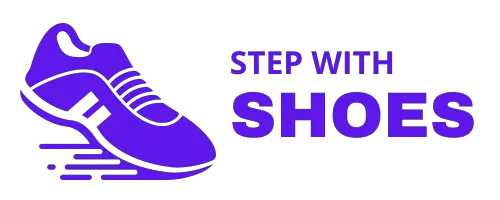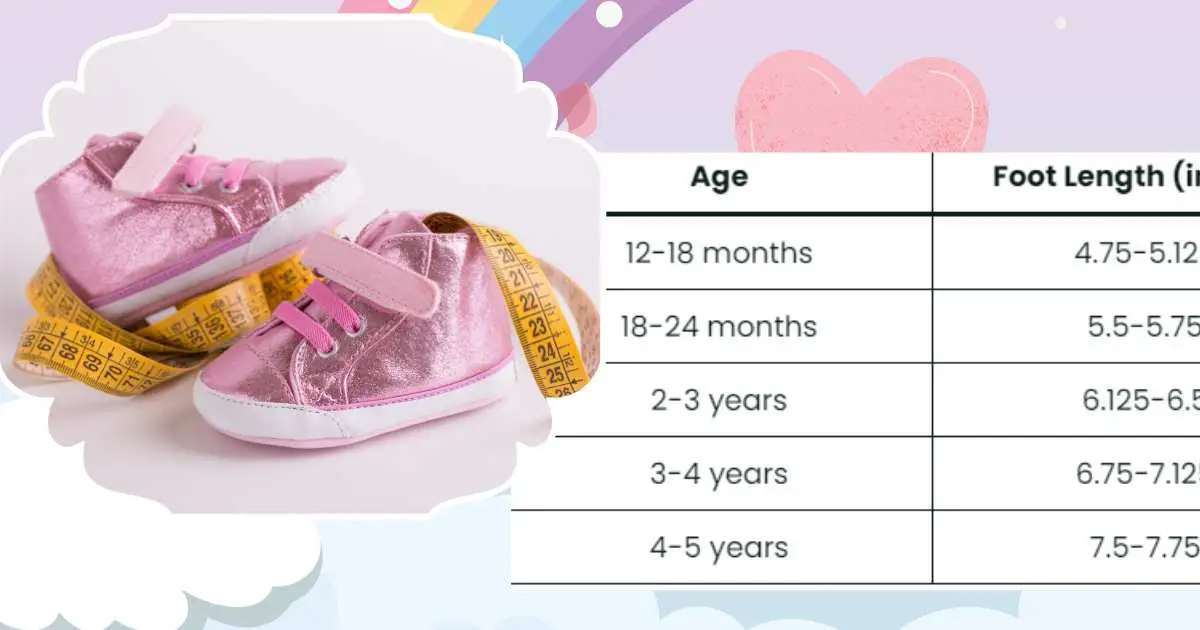A toddler shoe size chart is essential for finding the perfect fit for your child’s feet. It typically ranges from size 4 to 10. Selecting the right shoe size for toddlers can be a challenging task for parents. Toddlers grow at an astonishing rate, and their feet are no exception. This makes it crucial to have an accurate and up-to-date size chart at your disposal.
With the right shoe size, your toddler can move comfortably and safely, preventing any potential foot problems. An effective size chart serves as a valuable tool, ensuring you choose shoes that provide ample space for growth and movement. Remember, the best shoe for your toddler is one that fits well today, with a little room to grow. Keep this guide handy for a hassle-free shopping experience, ensuring your little one’s feet are well-cared for as they explore the world.
The Importance Of Choosing The Right Size
The Importance of Choosing the Right Size for toddler shoes is crucial. Proper fit supports healthy growth and comfort. It helps prevent foot issues later. Parents need accurate size charts for their toddlers’ fast-growing feet.
Growth And Development
Young children’s feet grow quickly. A shoe that fits well today might become tight in just a few months. Regular size checks are essential. They ensure shoes provide enough space for toes to move freely. This is vital for natural foot development.
Here’s a basic toddler shoe size chart:
| Age | Foot Length (inches) | Foot Length (cm) |
|---|---|---|
| 12-18 months | 4.75-5.125 | 12.1-13.0 |
| 18-24 months | 5.5-5.75 | 14.0-14.6 |
| 2-3 years | 6.125-6.5 | 15.6-16.5 |
| 3-4 years | 6.75-7.125 | 17.1-18.1 |
| 4-5 years | 7.5-7.75 | 19.1-19.7 |
Avoiding Foot Problems
Shoes that don’t fit can lead to foot problems. Tight shoes cause blisters, bunions, and pain. Overly large shoes lead to tripping and improper walking. Both scenarios can affect a toddler’s gait and posture.
- Measure feet every 2-3 months.
- Check for red marks on feet after shoe removal.
- Feel for toe space in the shoe’s front.
Selecting the right shoe size helps toddlers walk and run better. This encourages active play and proper foot health.
Understanding Toddler Shoe Sizes
Finding the right shoe size for toddlers is crucial.
It’s not just about comfort. Proper fit affects balance and development.
This guide simplifies shoe sizing for little feet.
Measuring Foot Length
Start with foot measurement. It’s best to measure in the afternoon.
Feet expand throughout the day. Use a ruler or a shoe chart.
Place your child’s foot on a piece of paper. Mark heel and longest toe.
Measure the distance between these two points. Check against a size chart.
Sure, I can help you create a more comprehensive and SEO-optimized table related to shoe sizes. Here is an enhanced version that includes more sizes and adds some contextual information about shoe sizing systems.
Shoe Size Conversion Chart
This chart provides a comparison of foot lengths in centimeters to US, UK, and EU shoe sizes for infants and toddlers. Shoe size conversion can vary by brand, so it’s always best to try on shoes before purchasing.
| Foot Length (cm) | US Size | UK Size | EU Size |
|---|---|---|---|
| 12.0 | 5 | 4.5 | 20 |
| 12.7 | 6 | 5.5 | 22 |
| 13.0 | 6.5 | 6 | 23 |
| 13.7 | 7 | 6.5 | 24 |
| 14.0 | 7.5 | 7 | 24.5 |
| 14.5 | 8 | 7.5 | 25 |
| 15.0 | 8.5 | 8 | 26 |
| 15.5 | 9 | 8.5 | 26.5 |
| 16.0 | 9.5 | 9 | 27 |
4o
Understanding Shoe Size Systems
- US Size: Commonly used in the United States, this sizing system typically starts from size 0 for infants.
- UK Size: Used primarily in the United Kingdom, this system also starts from size 0 but tends to run slightly smaller than US sizes.
- EU Size: The European shoe sizing system is based on the length of the last (the foot-shaped mold the shoe is built around) and is measured in Paris Points (1 Paris Point = 2/3 cm).
Width Considerations
Width is just as important as length. Shoes should not pinch or slip off.
Measure width with a soft tape measure. Wrap it around the widest part.
Check for extra space in the toe area. This allows growth.
Different brands have different width sizes. Try shoes on for the best fit.
- Narrow width – N
- Medium width – M
- Wide width – W
Add more as needed
Reading A Shoe Size Chart
Finding the perfect fit for a toddler’s shoe can be tricky. A shoe size chart is a parent’s best friend. It ensures your child’s feet stay comfortable and supported. Let’s decode these charts together.
Interpreting Length And Width
Shoe size charts come with two main measurements: length and width. Length measures the foot from heel to toe. Width measures the broadest part of the foot. A good fit needs both correct length and width.
First, place your child’s foot on the chart. Make sure they stand straight. The longest toe should align with the length line. For width, check the side measurements. Your child’s foot should sit within the width lines.
Here’s a simple guide:
| Length (inches) | Width | US Size |
|---|---|---|
| 4.75″ | Medium | 5T |
| 5.125″ | Wide | 6T |
Comparing International Sizes
Shoe sizes vary around the world. A US size might be different in Europe or Japan. It’s important to compare sizes before buying.
- US sizes are based on inches.
- UK sizes are similar, but start at a different number.
- EU sizes are based on centimeters.
- JP sizes also use centimeters, with different standards.
Use a conversion chart to find the right size. Match the length of your child’s foot to the chart. It will show the corresponding size in US, UK, EU, and JP formats.
| Foot Length (cm) | US Size | UK Size | EU Size | JP Size |
|---|---|---|---|---|
| 12.0 | 5T | 4.5 | 21 | 12.5 |
| 12.7 | 6T | 5.5 | 23 | 13.5 |
| 13.0 | 6.5 | 6 | 23 | 14 |
| 13.7 | 7 | 6.5 | 24 | 14.5 |
| 14.0 | 7.5 | 7 | 24.5 | 15 |
Tips For Shoe Shopping With Toddlers
Finding the perfect fit for tiny, fast-growing feet is essential. Toddler shoe size charts guide parents through the maze of shoe shopping. With the right approach, the experience can be fun and hassle-free. Explore key strategies for a successful shopping trip.
Best Times To Shop
Scheduling matters when shopping for toddler shoes. Late afternoons are ideal. Feet swell throughout the day, so afternoon sizes are most accurate. Ensure a nap precedes the trip to keep moods light.
Involving Your Child
Turn shoe shopping into a game. Let your child choose between options. Engage them with colors and characters. Positive involvement leads to smoother fittings and happier outcomes.
| Age | US Size | Foot Length (inches) |
|---|---|---|
| 1-2 years | 4-7 | 4.75″ – 5.625″ |
| 2-3 years | 7-9 | 5.625″ – 6.25″ |
| 3-4 years | 9-11 | 6.25″ – 6.75″ |
- Measure feet every two months.
- Seek shoes with flexible soles for comfort.
- Choose breathable materials to keep feet dry.
How To Measure Your Toddler’s Feet At Home
Finding the perfect shoe size for your toddler is vital. It ensures comfort and supports healthy foot development. You can easily measure your toddler’s feet at home. This guide will show you how.
Tools You’ll Need
Prepare the following tools before you start:
- Paper
- Marker or pen
- Ruler or measuring tape
- Flat surface
Step-by-step Guide
Follow these simple steps to measure your toddler’s feet:
- Place the paper on a flat surface.
- Have your toddler stand on the paper.
- Mark the longest toe and heel on the paper.
- Measure the distance between these two points.
- Record the measurement.
- Repeat for the other foot.
Feet can vary in size. Use the larger foot’s size to choose shoes.
Once you have the measurement, refer to a toddler shoe size chart. This will help you find the perfect shoe size for your child.
Remember to measure your toddler’s feet regularly. Their feet grow fast!
When To Size Up: Signs It’s Time For New Shoes
Toddlers grow fast, and so do their feet. It’s crucial to ensure they always have the right shoe size for comfort and development. But, knowing when to size up can be tricky. Look for these signs to keep those little feet happy.
Visible Signs Of Wear
- Stretched Out Shoes: If shoes look overstretched, it’s time for a bigger size.
- Worn Soles: Check for patterns fading or thinning at the bottom.
- Toe Marks: Visible toe imprints on the insole suggest cramped toes.
Behavioral Cues
- Refusal to Wear Shoes: A clear sign they’re not comfortable anymore.
- Trips and Falls: Clumsiness can mean shoes don’t fit right.
- Complaints: Listen if they say their shoes hurt or are too tight.
Regularly measure your toddler’s feet and compare with a shoe size chart. This ensures a perfect fit every time. Keep their steps secure and comfy with well-fitting shoes!
Common Mistakes To Avoid
Choosing the right size for toddler shoes is crucial. Parents often make mistakes that affect their child’s comfort and foot development. Let’s look at common errors to avoid.
Buying Too Large
Parents sometimes buy bigger shoes thinking kids will grow into them. This can be harmful. Oversized shoes cause tripping and don’t support feet properly.
Use a shoe size chart to find a perfect fit. Shoes should allow for some growth but not too much. Check shoe fit every few months as toddlers’ feet grow fast.
Ignoring Width
Shoe width matters as much as length. Ignoring width can lead to discomfort and foot problems. Some toddlers have wide feet and need special sizes.
Measure both length and width. A good fit will not squeeze the sides of the feet. Check for signs like red marks or complaints of tight shoes. Adjust size accordingly.
Caring For Toddler Shoes
Caring for toddler shoes is crucial. It extends their life and keeps them comfortable. Remember, toddlers play hard. Their shoes face mud, puddles, and all kinds of stains. Regular cleaning and proper storage help a lot. Here’s how to keep those tiny kicks looking great.
Cleaning Tips
Regular maintenance keeps toddler shoes in top shape. Use these simple tips:
- Wipe shoes after each wear.
- Use gentle soap and water for cleaning.
- Brush off dried dirt.
- Avoid washing machines. They can damage shoes.
- Air dry away from direct sunlight.
- For leather, use conditioner to prevent cracks.
Storage Solutions
Proper storage keeps shoes ready for the next adventure. Try these ideas:
- Use clear boxes to see shoes easily.
- Separate dirty shoes from clean ones.
- Keep them in a cool, dry place.
- Shoe racks save space.
- Avoid piling shoes on top of each other.
- Label boxes for quick finding.
Frequently Asked Questions
What Age Does Toddler Shoe Sizing Cover?
Toddler shoe sizes typically range from ages 1 to 4 years, designed for little ones as they learn to walk and play.
How To Measure Toddler Feet At Home?
To measure a toddler’s feet at home, place their foot on a piece of paper, mark the longest toe and heel, then measure the distance.
Can Toddlers Wear Shoes A Size Bigger?
While a little extra room can accommodate growth, excessively big shoes may hinder a toddler’s walking and stability.
Conclusion
Navigating toddler shoe sizes doesn’t have to be a challenge. With our comprehensive chart, you’re set to make informed choices for your little one’s footwear. Remember, the right fit supports healthy foot development and ensures your toddler’s comfort and mobility.
Keep this chart handy for stress-free shopping and a happy, active child.



Leave a Reply